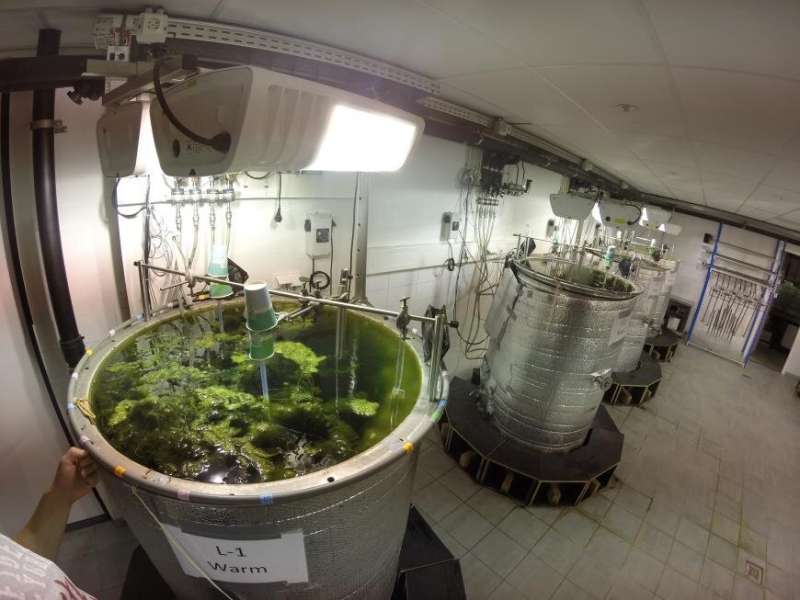Submerged plants reduce greenhouse gas emissions from shallow lakes and ditches

Shallow lakes and ditches emit less greenhouse gases if rooted submerged plants are predominant instead of free-floating plants or algae. There are several reasons why Dutch water managers should encourage more submerged plants in Dutch waterways, researchers argue. But these plants will have a better chance of survival if fewer fertilizers are leached into Dutch waters. The researchers recently published their findings in the journal Water Research.
Lakes and ditches cause a large share of the total emissions of methane, a greenhouse gas, in the Netherlands (estimated to be around 16%). Unfortunately, climate change amplifies this problem, because emissions of methane increase rapidly as water warms up. This happens especially in nutrient-rich water, where a lot of organic matter is present on the bottom that microorganisms convert into methane via the process of decay.
Free-floating aquatic plants (such as duckweed) and algae benefit the most from climate change, because they grow near the surface and so are the first to take advantage of the higher temperatures and higher CO2 concentrations in the air. Meanwhile, the increasingly heavy rainfall is causing even more fertilizer to leach from farmland into the surface water.
More oxygen
However, in water where submerged plants predominate rather than free-floating plants, emissions increase much more slowly as the water warms up, researchers from Radboud University, the Netherlands Institute of Ecology (NIOO-KNAW), Wageningen University and IGB Berlin have revealed. They made their discovery by simulating Dutch waters in large tanks containing either mainly algae, free-floating plants or submerged plants. Half of the tanks were warmed by 4 °C, anticipating the expected degree of climate warming by the end of this century.
"We think submerged plants cause this effect because they leak oxygen into the soil, enabling the microorganisms there to consume more methane," explains first author Ralf Aben of Radboud University. "There is a caveat though: we used the common plant watermilfoil. It is not clear whether all submerged plants have the same effect. That will require further research."
Win-win situation
The discovery is good news for Dutch water managers, says final author Sarian Kosten of Radboud University. They are already investing in increasing the coverage of submerged plants in Dutch lakes and ditches, mainly to improve the water quality and biodiversity. "But this research shows that it is also good for reducing greenhouse gas emissions from bodies of water. So it's a win-win," continues Kosten.
"Unfortunately, too much fertilizer is still leaching into our surface water in everyday practice. This is due to the gigantic network of ditches we have in the Netherlands," Kosten explains. "As a result, free-floating plants, which grow well in such waters, remain dominant. So, if we can reduce the amount of fertilizer, this will not only reduce nitrogen emissions, but it will also reduce greenhouse gas emissions from lakes and ditches."
More information: Ralf C.H. Aben et al, Temperature response of aquatic greenhouse gas emissions differs between dominant plant types, Water Research (2022). DOI: 10.1016/j.watres.2022.119251
Provided by Radboud University



















